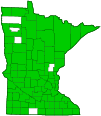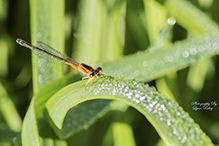eastern forktail
(Ischnura verticalis)
Conservation • Description • Habitat • Ecology • Distribution • Taxonomy
|
|
||||||||||||||
Description |
Eastern forktail is a small, narrow-winged damselfly. It occurs east of the Rocky Mountains from Quebec and Georgia in the east to Manitoba and New Mexico in the west. It is very common in the northeast and Midwest, present but uncommon in the southern tier of states. It is abundant in Minnesota, where it has been reported in 81 of the state’s 87 counties. Adults are ⅞″ to 1 3 ⁄16″ (22 to 30 mm) long. On the male, the face is green. The top of the head is black. The compound eyes are mostly green, black just on the top. There is a small, bright green, circular spot (postocular spot) behind each eye. The spots are not connected by a bar. The thorax is black with narrow green shoulder stripes and pale green sides. The stripe is often narrowest at ⅔ its length. On rare individuals, the stripe is broken, as it is on the closely related fragile forktail. The abdomen is very slender and mostly black, with a pale, very narrow ring at the tip of each segment. Abdominal segments 8 and 9 are bright blue above and below, but on the sides they are black on the leading half and bright blue on the apical half. There is a forked projection on the upper side of segment 10 that gives this genus the common name forktails. The projection is blunt and is forked for half of its length. It points more upward than rearward, and does not extend beyond the tip of segment 10. The projection is too small to be used as a field mark, but may be discernible in photos. The wings are clear and are distinctly narrowed (stalked) at the base. There are only two cross veins between the base of the wing and the wing notch (nodus). The median vein intersection, where the M3 vein rises to meet the M1 vein, occurs after the nodus, closer to the nodus than the basal cross vein (arculus). The legs are short and armed with spines. They are black above and on the sides, pale blue below. Immature females are black with orange markings. Abdominal segment 2 and the basal half of segment 3 are orange. Segments 4 through 10 are black. The back of the head, the postocular spots, and the legs are orange. Mature females are entirely covered with a pale blue powdery bloom (pruinose), obscuring any black or blue markings that may or may not be there. The postocular spots are pale blue and are larger. |
Size |
Total length: ⅞″ to 1 3 ⁄16″ (22 to 30 mm) |
Similar Species |
Habitat |
Ponds, marshes, slow streams, and other wetlands |
Ecology |
Season |
Late May to early October |
Behavior |
Eastern forktail is a weak flier and is usually found low in vegetation. The wings are held together above the body when at rest. |
Life Cycle |
|
Naiad Food |
|
Adult Food |
Flying insects |
Distribution |
||
|
Sources Biodiversity occurrence data published by: Minnesota Biodiversity Atlas (accessed through the Minnesota Biodiversity Atlas Portal, bellatlas.umn.edu, 6/24/2025). |
|
| 6/24/2025 | ||
Occurrence |
||
Widespread and very common. Abundant in Minnesota. |
||
Taxonomy |
|
Order |
Odonata (dragonflies and damselflies) |
Suborder |
|
Superfamily |
Coenagrionoidea |
Family |
Coenagrionidae (narrow-winged damselflies) |
Genus |
Ischnura (forktails) |
Subordinate Taxa |
|
|
|
Synonyms |
|
|
|
Common Names |
|
eastern forktail |
|
Glossary
Pruinescence
A waxy or powdery bloom that covers the underlying coloration and gives a dusty or frosty appearance.
Visitor Photos |
||
Share your photo of this insect. |
||
This button not working for you? |
||
Alfredo Colon |
||
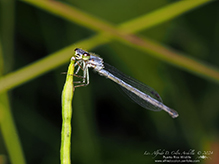 |
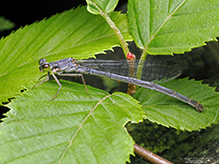 |
|
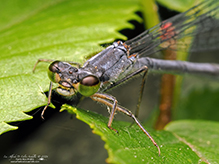 |
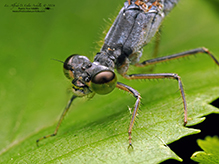 |
|
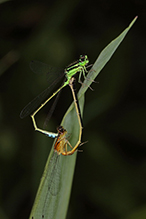 |
||
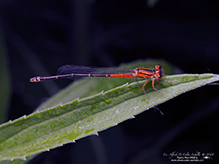 |
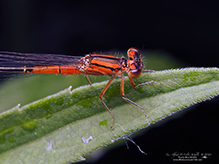 |
|
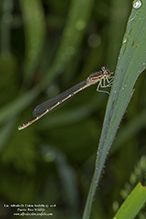 |
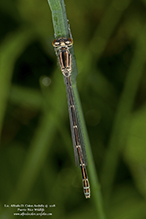 |
|
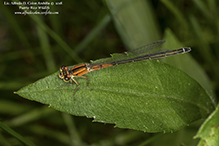 |
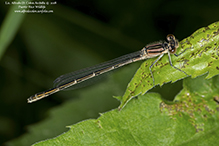 |
|
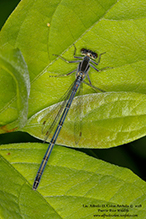 |
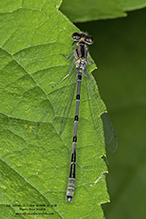 |
|
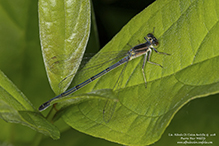 |
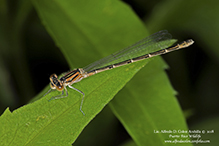 |
|
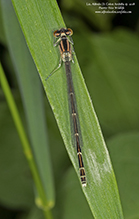 |
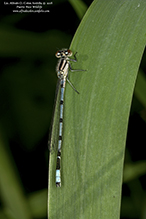 |
|
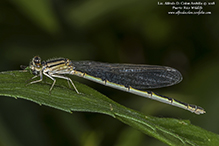 |
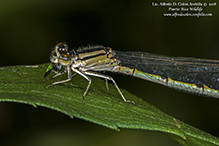 |
|
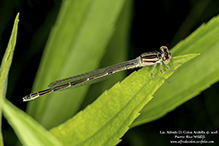 |
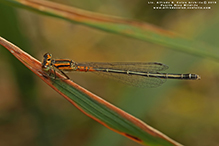 |
|
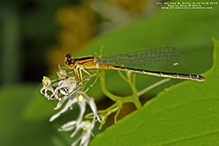 |
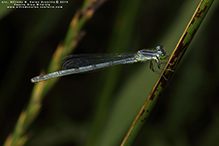 |
|
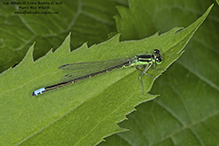 |
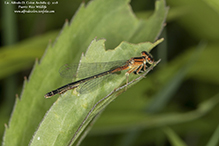 |
|
Adult Male |
Immature Female |
|
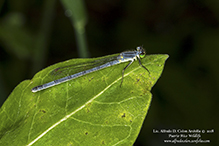 |
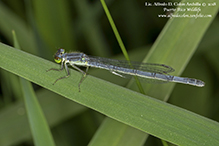 |
|
Adult Female |
Adult Female | |
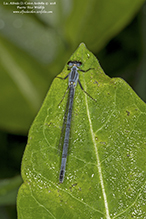 |
||
Adult Female |
||
Babette Kis |
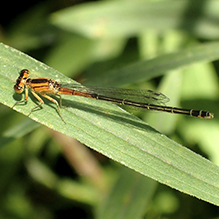 |
Ischnura verticalis eastern forktail Ischnura verticalis eastern forktail, on goldenrod leaf, near the pond at Barnes Prairie, Racine Co., WI. Photo taken on August 6, 2022. |
Greg Watson |
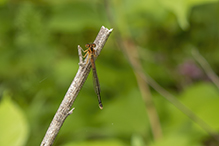 |
Lynn Rubey |
||
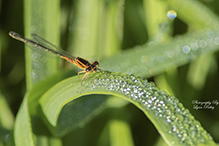 |
||
An eastern forktail in The Big Stone National Wildlife Refuge with the morning dew on the grass. |
||
MinnesotaSeasons.com Photos |
||
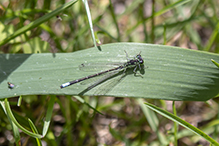 |
| Rare form adult male with broken shoulder stripes |

Visitor Videos |
||
Share your video of this insect. |
||
This button not working for you? |
||
|
Other Videos |
||
Eastern Forktail (Coenagrionidae: Ischnura verticalis) Male Resting |
About
Published on Aug 7, 2010 Photographed at Itasca State Park, Minnesota (06 August 2010). |
Eastern Forktail (Coenagrionidae: Ischnura verticalis) Male Tail-flipping Behavior |
About
Published on Aug 7, 2010 Photographed at Itasca State Park, Minnesota (06 August 2010). |
Ischnura verticalis |
About
Published on Dec 1, 2018 Agrion vertical (Ischnura verticalis) en train de manger une proie. Google Translation: Agrion vertical (Ischnura verticalis) eating prey. |
Eastern Forktail Damselflies (Coenagrionidae: Ischnura verticalis) on Twig |
About
Published on Aug 9, 2011 Immature female (left) and adult male (right). Photographed in Wisconsin, just across the Mississippi River from Red Wing, Minnesota (04 August 2011) Thank you to John and Jane Balaban (@Bugguide.net) for indentifying the sex and identity of these specimens. |

Visitor Sightings |
||
Report a sighting of this insect. |
||
This button not working for you? |
||
| Alfredo Colon 9/22/2024 |
Location: Albany, NY |
 |
| Alfredo Colon 9/2/2024 |
Location: Albany, NY |
 |
Alfredo Colon |
Location: Albany, NY |
 |
| Babette Kis 8/6/2022 |
Location: Barnes Prairie, Racine Co., WI Ischnura verticalis eastern forktail, on goldenrod leaf, near the pond at Barnes Prairie, Racine Co., WI. Photo taken on August 6, 2022. |
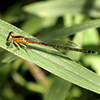 |
| Greg Watson 6/10/2022 |
Location: Reno Quarry Trail, Reno North Recreational Area |
 |
| Alfredo Colon 10/6/2019 |
Location: Woodbury, Minnesota |
 |
| Lynn Rubey 8/25/2019 |
Location: Big Stone National Wildlife Refuge An eastern forktail in The Big Stone National Wildlife Refuge with the morning dew on the grass. |
 |
| Alfredo Colon Summer 2018 |
Location: Woodbury, Minnesota |
 |
MinnesotaSeasons.com Sightings |
||

Created: 4/8/2019 Last Updated: © MinnesotaSeasons.com. All rights reserved. |
